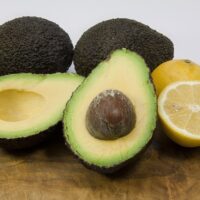Harvesting the Balance of Autumn
September 23rd ushers in the autumn equinox, a time when day and night are in perfect balance.
It also opens the official season of cozy sweaters, pumpkin spice (everything), and the raking of leaves. The world around us slowly begins its transformation into a canvas of amber, gold, and crimson.
Summer was generous this year in the Region. Warm, vibrant, and full of activities. But like all good things, it had its moments of scorching heat and relentless humidity.
We now look to experience the cool, calm, balance of autumn. 
I’m always torn. I adore the warmth and freedom of summer, yet I’m equally drawn to autumn’s shifting rhythms and vibrant colors.
I also like wearing cozy sweaters and cowgirl boots. Mr. Non-Compliant can rake the leaves.
Unless you’re nestled somewhere in the tropics of endless summer, I bet you’re feeling the same pull towards this season of change.
As we stand on the cusp of this equinox, what are some of the memories you made this summer?
Maybe you had some adventures planned. Did they pan out? Were there moments of unexpected joy or perhaps some that required a rain check?
Take a few moments to think about the last several months.
Whatever your reflections, it’s alright. If the summer’s whirlwind left you a bit disoriented, autumn is your chance to find your footing again.
If you’re wondering how the year seems to be slipping by like sand between your toes, I urge you to take a moment to reflect on what truly matters.
Who and what warms your heart as we make our way into the chill of the coming months?
Perhaps you can take the adventure that you didn’t have time for during the summer, begin the special project that you’ve been putting off, try that Zumba class everyone’s raving about. 
Or just be still.
This is all intertwined with our “Deep Health.” Every sunset, every breeze, every sip of that pumpkin latte affects our well-being.
True health isn’t just about the numbers on the scale or the steps on your activity app.
It’s about feeling grounded, cherishing connections, and savoring the simple joys.
If you’re seeking a path to weave autumn’s magic into your wellness journey, remember, I’m just a message away. 🍂🍁
Much love,
Health Coach Carol
“Life starts all over again when it gets crisp in the fall.”—F. Scott Fitzgerald








